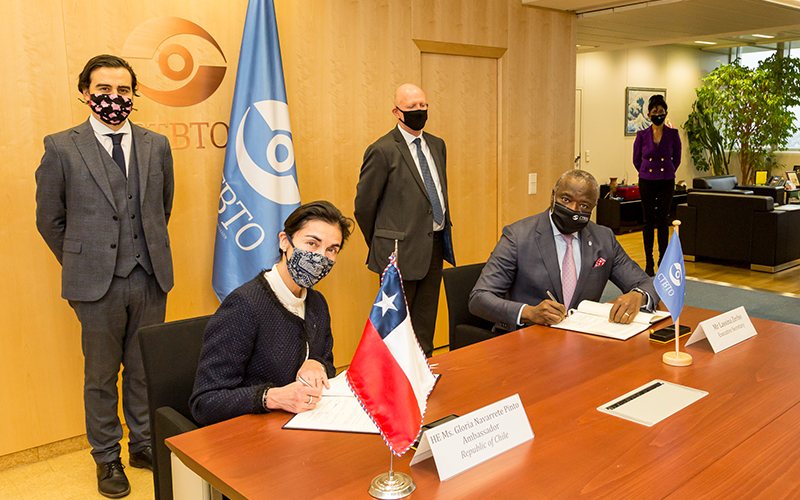Tsunami early warning
The International Monitoring System (IMS) was developed as a verification method for the Comprehensive Nuclear-Test-Ban Treaty (CTBT), however, there is a mutually beneficial relationship between the CTBT Organization and the world scientific community. Several projects have been developed based on these technologies with a view to scientific and civilian applications around the world. Following the catastrophic earthquake and subsequent tsunami off the coast of Sumatra, Indonesia, in December 2004, the CTBT Organization began providing monitoring data from its seismic and hydroacoustic stations directly to countries that were party to the Tsunami Warning Agreements. During a trial period, these centers received continuous real-time data and confirmed that it will strengthen the capacity of the Tsunami Warning System to issue effective public safety warnings when a tsunami hits the coast of the territory exposed to large earthquakes, in this case, Chile. The CTBT Organization currently has a total of 17 tsunami warning agreements, 16 in other countries; Australia, France, Greece, Indonesia, Italy, Japan, Republic of Korea, Madagascar, Malaysia, Burma, Philippines, Portugal, Thailand, Turkey, Russia and the United States. For Chile, the signing ceremony was held on December 17, 2020 at the CTBTO headquarters in Vienna and was attended by the Ambassador of Chile, Gloria Navarrete Pinto and the Executive Secretary of the CTBTO, Lassina Zerbo, who ratified the agreement. To make this alliance a reality, the National Seismological Center (CSN) first had to be recognized as an integral part of the National Tsunami Warning System (SNAM), by providing technical information to the Hydrographic and Oceanographic Service of the Navy (SHOA) to help it assess the tsunami hazard.

